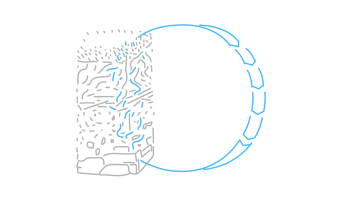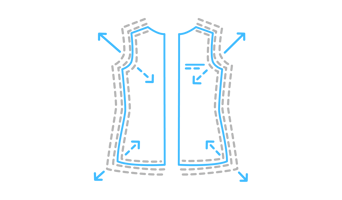Reviewing your organizational structure often offers two important levers that can reduce your overhead costs.
Let’s start with a general definition of overhead costs: overhead costs are indirect costs incurred by roles, functions and units within the organizational structure that do not directly contribute to the production of goods and services. Management and administrative costs are thus an important item within this definition of overhead costs.
When you aim to reduce overhead costs, one productive approach is often to review your organizational structure along two dimensions. The two structural dimensions essentially result from two types of activities, namely:
-
management and leadership activities (boss roles) and
-
administrative activities within supporting units in the organizational structure.
Both sets of activities (or structural dimensions) make up an important share of overhead costs. And so they are both important levers to realizing large cost-saving potential in many organizations. Let’s look at both dimensions in turn.
Get all the guidance you need
to redesign your organization
The first structural lever to reducing administrative overhead costs in your organization: review spans and layers
A first check is to measure and review your average spans of control and the number of layers within your chain of command. Both data points can easily be elicited based on your organization chart.
There is no single best answer to the number of layers and the average spans of control there should be; some criteria for evaluation are included in the tool “Define Spans and Layers” of the Organizational Structure Kit.
In our experience, incumbent industries with inherited business models display a higher density of middle managers and thus, on average, narrower spans of control compared to more forward looking companies in fast-moving markets. One of our client’s official guidance was “to consider a span of control of fourteen generally okay”, while we’ve worked with companies where bosses would direct an average of five direct reports. In addition to the surplus of direct overhead costs resulting from such narrow spans of controls, there are also other disadvantages, such as a comparatively slow decision-making process.
Getting from high overhead costs to low overhead costs in an impactful way (and not just by calculating and allocating overhead costs in different ways) often requires reviewing and reducing layers, while enlarging spans of control (if not moving to higher levels of self-management altogether).
The second structural lever to cutting overhead costs: review the workforce capacity for administrative (overhead) tasks
The first lever relates to classic management and leadership tasks within a traditional managerial hierarchy.
The second lever is about the size of administrative (overhead) units and the depth and extent of activities performed within such units, which translate into personnel costs and expenses.
There are a number of perspectives and approaches to reviewing structural capacities and realizing overhead cost reductions:
-
The actual activities performed in the units, as well as the drivers of those activities (including demand management), and an evaluation of whether the activities should be done less, done more, or kept on the same level
-
The assessment of whether there are redundancies between units, e.g. between centralized and decentralized units, or on the level of decentralized activities
-
The administrative processes that trigger activities and the extent to which those processes can be streamlined, standardized, automated, outsourced, or discarded
The two structural options to reducing overhead costs are relevant for many different types of overhead costs, be it project overhead, manufacturing overhead, variable or fixed overhead, and production overhead costs. They will be part of most overhead cost reduction strategies.
The Organizational Structure Kit is designed to let you plan, run, and facilitate your organization restructuring work, comprising key process and content guidance for immediate action and impact. Check out the Kit as part of our free preview.
Boost organizational effectiveness
with Management Kits
Also read these blog posts on organizational performance:
-
Three essential steps of any cost reduction strategy: Cost cutting strategies must not be limited to analyzing and adding up the potential effects of cost saving ideas. Instead, leaders, cost reduction consultants, and expense reduction analysts have to think through and execute three essential process steps in order to achieve cost cutting success.
-
How to get rightsizing right: Five key imperatives: Rightsizing, in contrast to downsizing, takes a proactive, long-term view of a company’s cost position. This blog post discusses five imperatives to consider when embarking on a rightsizing initiative.
-
Should you delayer your organization? Delayering is potentially one of the strongest measures to reduce administrative overhead costs in your organizational structure. As an additional advantage, delayering often helps organizations to make faster decisions and become more effective overall. A number of key criteria can help you to determine whether you should review and adapt your spans and layers.



